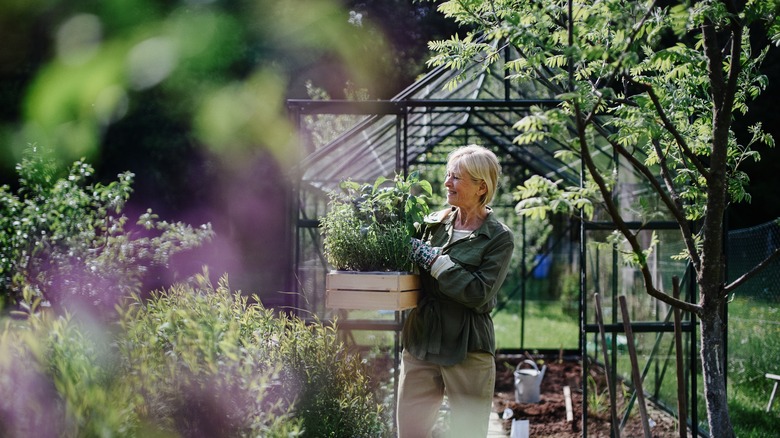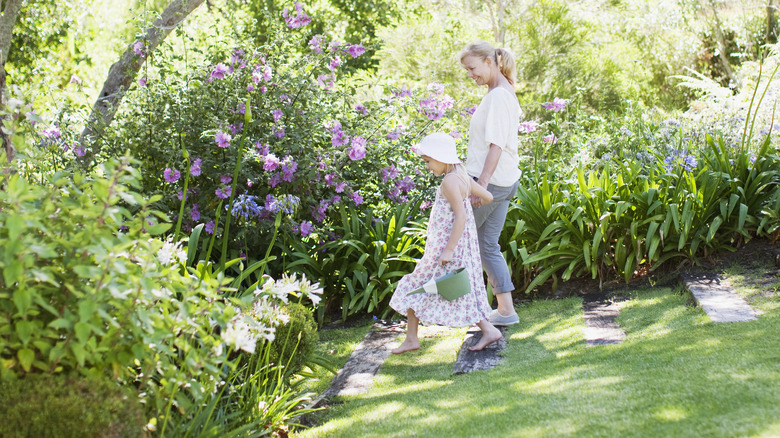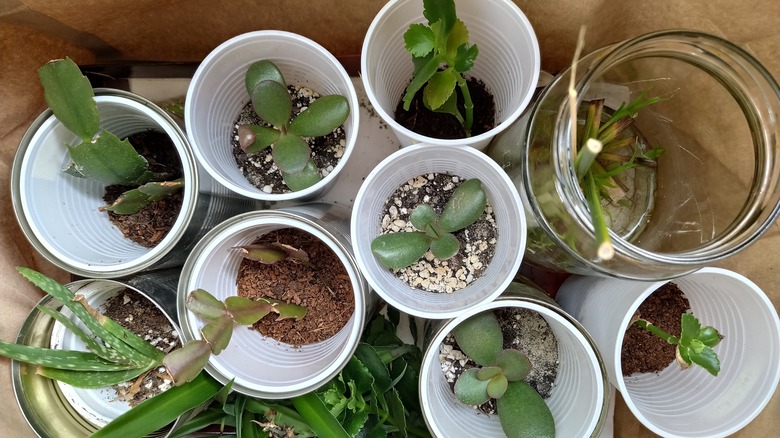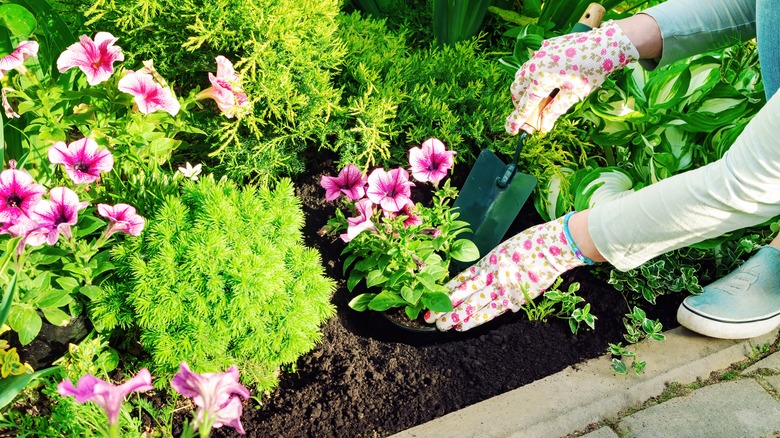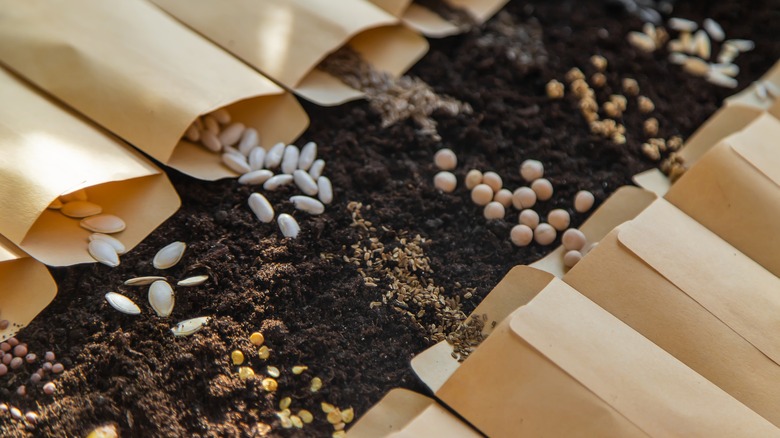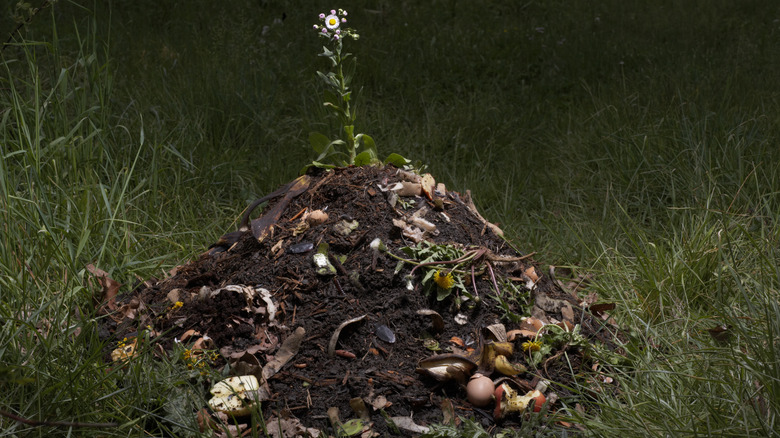How To Take Your Garden From Drab To Fab On A Budget, According To An Expert
Building a fabulous backyard garden is an aspiration that many hold close to their hearts. Not only can it provide sustenance for you and your family and add a unique layer of self-sufficiency to the pantry, but the practice is excellent for promoting better mental health, boosting your mood, and encouraging time spent outdoors, according to WebMD.
But for those new to the experience, it can be daunting and seem like an expensive hobby. Taking the advice of a professional can help you establish a thriving and cost-effective garden that's sure to add color and energy throughout your home.
In an exclusive interview with House Digest, the founder of Learn to Grow Gardens, Liz Will, a Master Gardener through Michigan State University extension and a certified garden coach and garden consultant, offers tips for transforming your green space on a budget so that you can reap all of the benefits without breaking the bank.
Design it yourself
Planning is everything when designing a home; the same goes for designing a garden. According to Will, "You don't need to hire a landscape designer to create an attractive yard," she says. "With a little bit of research and planning, you can design it yourself."
Will offers some suggestions on getting started on this project: "First, write down what kind of elements and plants you'd like in your garden, such as flowering trees or shrubs for privacy." Developing a general concept of the things you'll try to grow can help you get a sense for the spatial requirements that will come into play. She continues, saying: "Second, look for inspiration in magazines, on social media, or in your own neighborhood. Third, take these ideas and combine them with the current layout of your garden. Do you need to move things? Are there areas you want to change?"
Giving yourself a visual can be helpful. Will says, "draw a rough sketch out on paper. You'd be surprised by how easily everything can come together when you have an idea of what you're hoping to create."
Participate in plant swaps
Liz Will suggests getting thrifty when buying for your small-budget garden. She says: "Now that you have an idea of what you're looking for, it's time to find some plants to fill in the blanks in your sketches. Plant swaps are a great way to do this for free. Check with your local gardening club or Master Gardener Society for swaps in your area."
These are great sources of information as well and can help launch your new garden in more ways than one. Will notes, however, that "you may be asked to bring a donation in order to participate. If there are plants in your yard you no longer want or have an abundance of, this can be a great way to get rid of them and let a fellow gardener enjoy them."
Before planting anything you bring home," though, she says, "be sure to check for pests, diseases, or unwanted weeds." Ensuring the plants are healthy will allow for better survival rates for anything you'll be bringing into the space around your home.
Watch for free plants from family, friends, and online garage sale sites
Will recommends some other ways to get your plants on a budget. She says, "a lot of plants, such as hostas and daylilies, need to be divided every few years or they can become overcrowded. Often, the extra plants are offered for free to anyone willing to pick them up. You can also find perennials and shrubs being given away if the owner is redesigning their own yard and looking for a change."
There's nothing defective or inherently wrong with these bulbs or seeded plants and therefore can add a new flash of color and variety to the garden you are working to jumpstart. Will notes that "spring is a great time to keep an eye out for free plants, as this is when most gardeners are actively working in their yards making changes for the upcoming season."
Start from seed
Seeds are another key resource touted by Will. She says, "a great way to save money on plants is to start them from seed. Flowering annuals, some perennials, and a lot of biennials can be started this way." What's more, once you've successfully grown your first season of flowering plants, deadheading the flowers and saving the seeds will allow you to continue bulking up the garden for many years to come. Alternatively, for many plant varieties, seeds will spread across the ground naturally. Then, when the seasons change again, your next generation of flowers will burst forth without any additional work on your part.
She names a few great varieties that are inexpensive and add a wonderful depth of color and height to the yard. She notes: "Snapdragons, cosmos, and marigolds are annuals that are easily grown from seed. Some perennial options are black-eyed Susan, purple coneflower, and asters. For biennials, look for foxgloves, hollyhocks, or California poppies. Keep in mind that most biennials won't flower until their second year, but they can be well worth the wait."
Use free compost and mulch
Finally, think of other resources you can get cost-free. Liz Will says that "both compost and mulch can often be found for free. Many cities offer compost for free to residents if you provide your own container for transporting it home." This is a simple means of sourcing the soil that's crucial to healthy plant life — and the alternative is purchasing bags of dirt, which don't always come cheap!
She emphasizes the importance of compost and has some recommendations for where to look for cost-free options, "Compost can be used as mulch in a pinch, by spreading it in a 2- to 4- inch layer on top of the soil. Shredded wood mulch can be delivered for free, or at a reduced price, from tree removal companies. These companies have to pay a fee to have their loads of shredded trees dumped, and will often be willing to drop it in your driveway if they're working in your area. Call a few local tree removal companies in your area to find one that offers this service."
